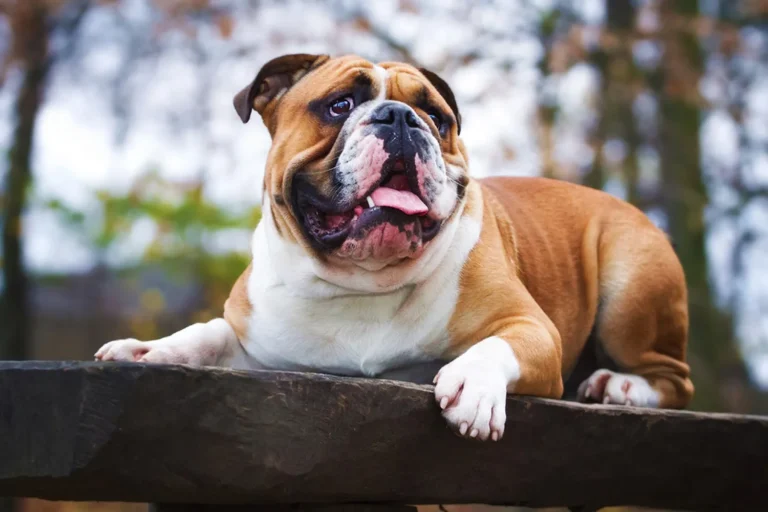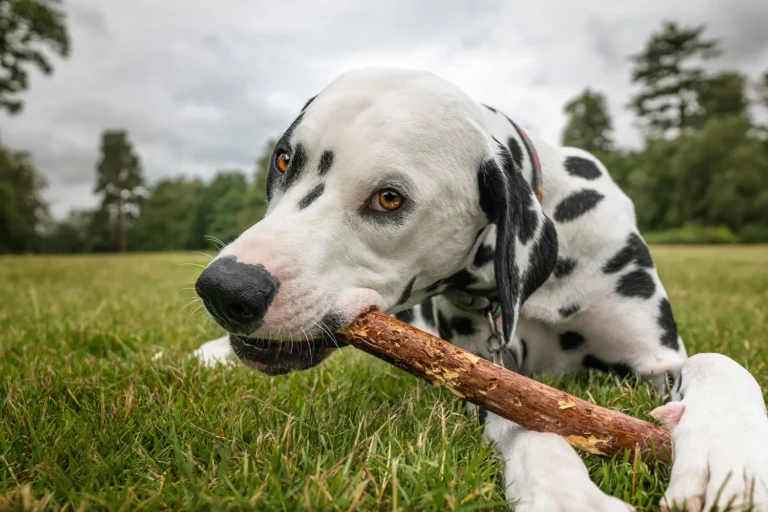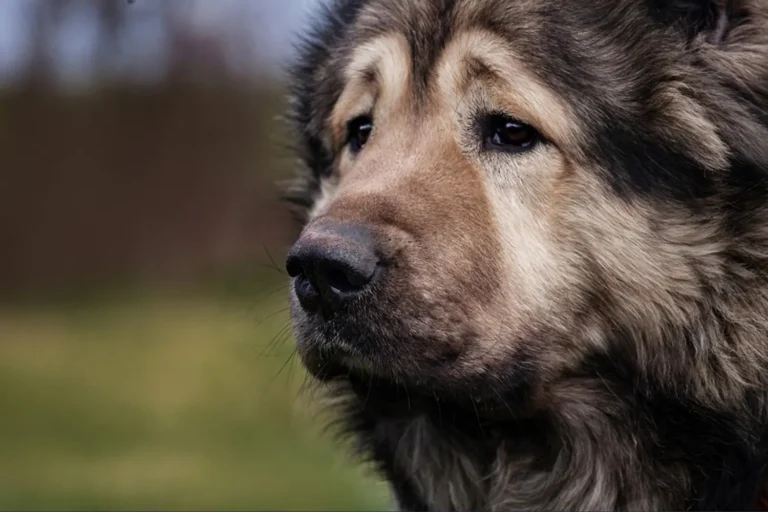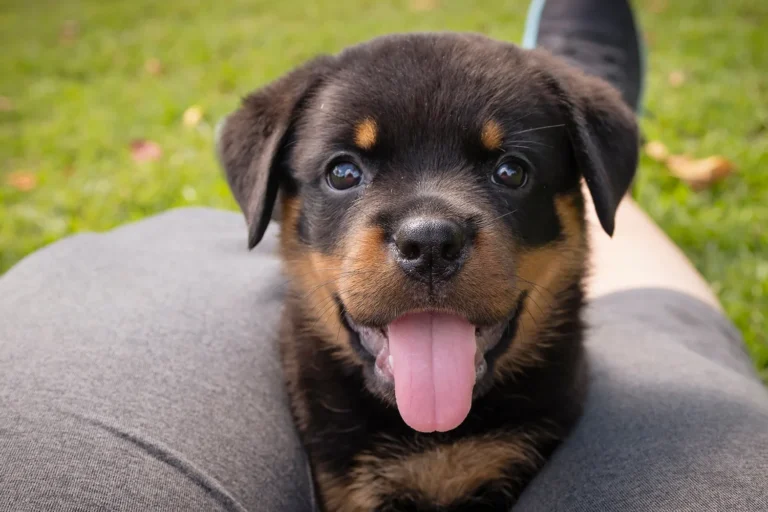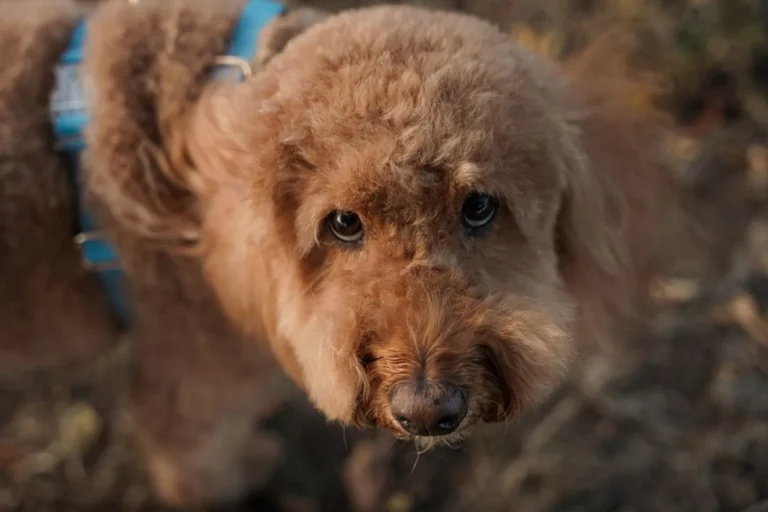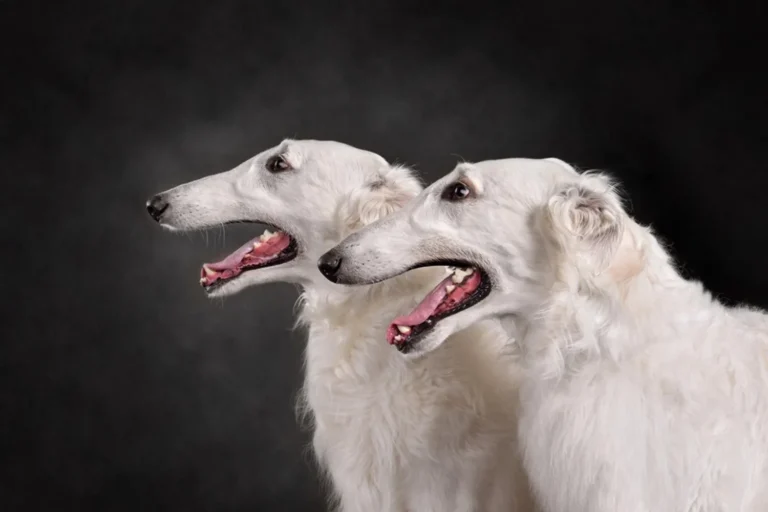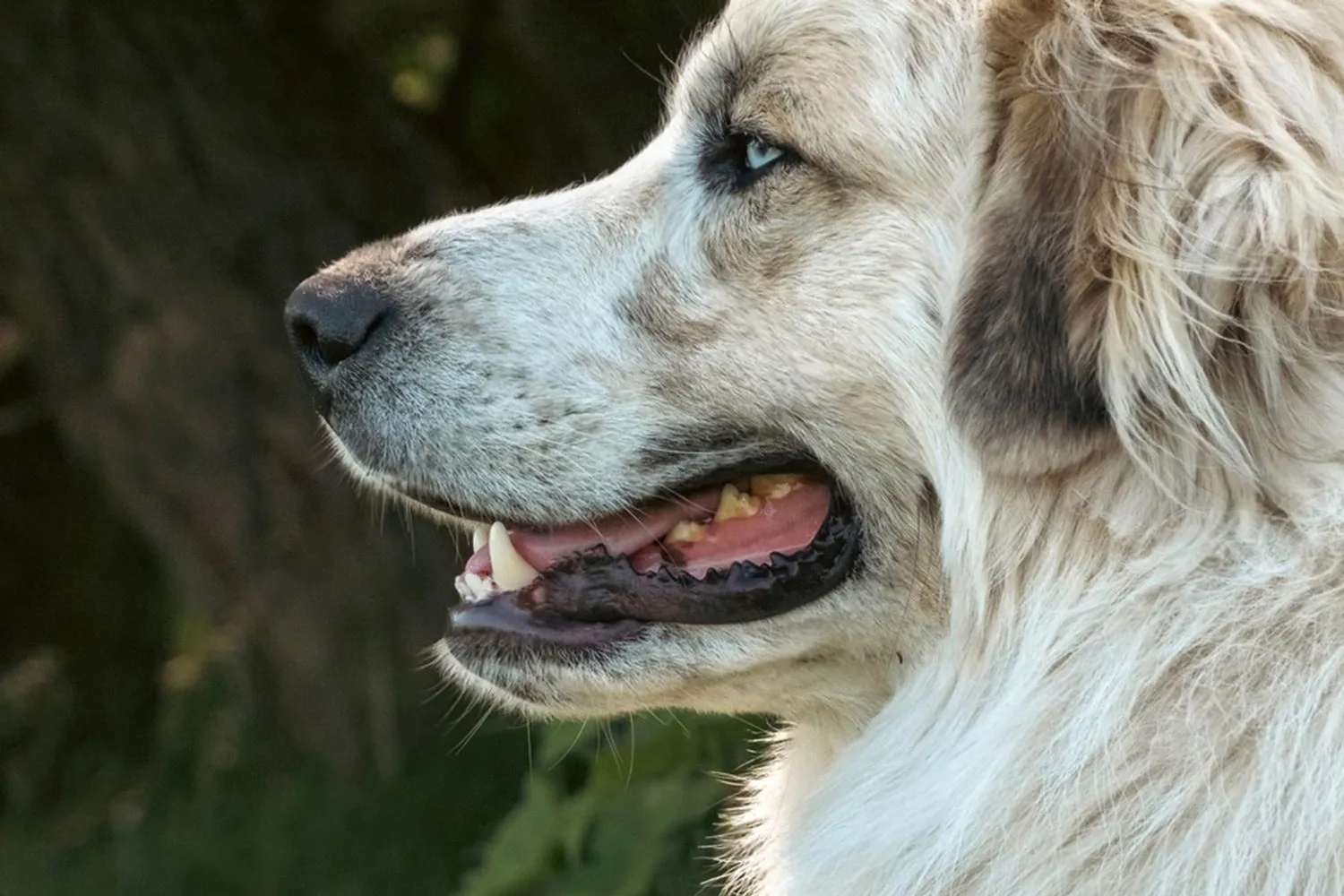
That bright, snow white coat is like a moving cloud, and people can’t help but smile when a Great Pyrenees floats by. The first one I met leaned his whole weight into my legs for a slow, gentle hug within a minute of saying hello. They have a calm, friendly way about them that makes the whole house feel softer around the edges. With family, they’re classic gentle giants happy to lounge at your feet, follow you from room to room, and dole out those giant, velvety nosed nuzzles.
They’re also wonderfully polite with other dogs when introduced thoughtfully. My friend’s Pyrenees and her bouncy Lab are proof one likes to supervise, the other likes to clown, and they nap nose to tail after playtime. A little advice from the trenches: keep a brush by the door for those fluffy coats, and plan easy, regular social outings so they can keep practicing their friendly hellos. Teach a solid “wait” at the door these cuddlebugs love greeting guests and be prepared for the occasional attempt at being a lapdog. With a bit of grooming and gentle guidance, you get a loving, affectionate companion who’s as happy making friends as they are leaning in for one more hug.
History and Origin of the Great Pyrenees
Picture a snow white giant standing quietly on a rocky ridge, watching over a flock as the wind rolls off the mountains. That’s the heart of the Great Pyrenees story. Long before they were making friends at dog parks, these dogs were working hard alongside shepherds, defending sheep and goats from wolves and other big predators. Their thick, weatherproof coats and that steady, powerful gaze weren’t just for show they made the breed perfectly suited to life high in the Pyrenees mountains.
Their name tells you exactly where they come from: the Pyrenees, the rugged range between France and Spain. In Europe they’re often called the Pyrenean Mountain Dog, and the title fits like a glove. That fluffy “fleece” is more than pretty it’s practical, helping them shrug off snow and cold nights while they patrolled the hills. I once met a Great Pyrenees on a misty morning in a mountain village; he didn’t rush up to say hello, just gave me a thoughtful look, then resumed scanning the slope, as if he had a shift to finish.
Over time, their calm courage and striking beauty caught the eye of French nobility. The Great Pyrenees became a favorite in grand estates and, for a period, was even considered the royal dog of France. I always smile when I spot one in a French film they have a way of stealing a scene simply by padding through with that feathery tail and regal posture. Directors love them for their camera ready coat and their gentle, friendly temperament, which reads beautifully on screen.
Despite the fancy history, the soul of the breed is still that of a guardian. My friend keeps a Great Pyrenees to watch over backyard chickens, and it’s remarkable how the dog moves quiet, deliberate, always between the flock and whatever might be out there. If you ever bring one home, a bit of advice: give them a “job,” even if it’s just patrolling the yard or walking a perimeter. It taps into their heritage and keeps them content. Beneath the cloud of white fur lives a thoughtful worker, as comfortable on a film set as on a foggy mountain trail, but happiest when there’s something worth protecting.
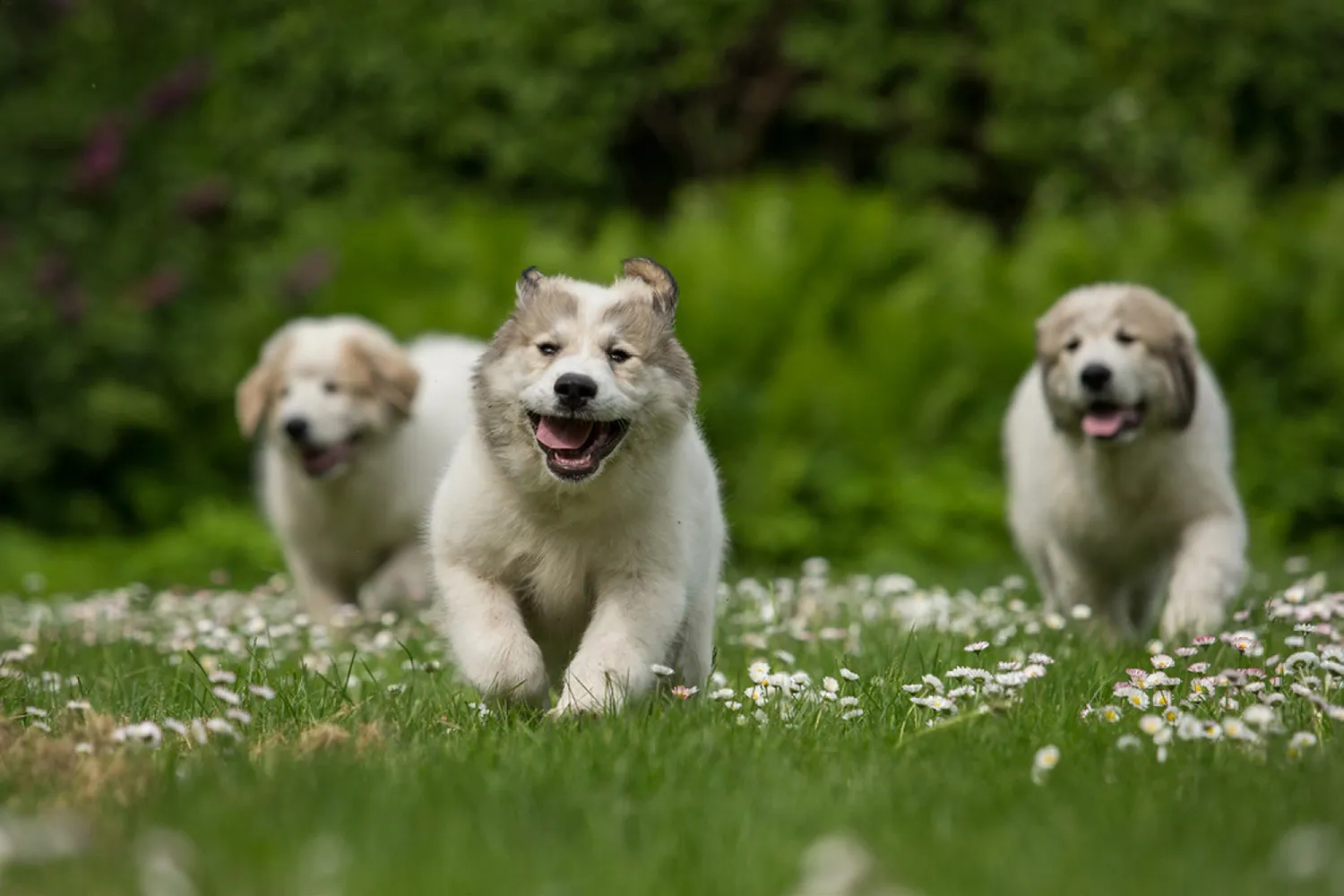
What Is a Great Pyrenees?
Think giant marshmallow with a heartbeat and you’re close. The Great Pyrenees is a big, mostly white, deeply affectionate dog that seems to carry calmness around like a warm blanket. They’re famous for their gentle nature with family and friends, and mine would do that classic Pyr “lean” that says, “I’m here, and I adore you.” Despite their size, they move slowly and thoughtfully, and they usually get along well with other dogs especially when they’ve had good socialization and training early on. I still smile remembering a puppy class where a fluffy Pyr baby calmly sat while a terrier zipped circles around him; unflappable is the word.
That gorgeous shaggy coat isn’t just for looks. It’s a protective, weather ready layer that lets them thrive in cold climates. If you’ve ever seen a Pyr plop into a snowbank like it’s a featherbed, you know what I mean. The flip side is grooming: plan on regular brushing to keep mats at bay and be ready for seasonal shedding. A quick weekly brush and a more thorough session during “fluff explosion” season has worked well for me. They love cuddles and don’t mind being squished on the couch, but remember they’re still large dogs make room for that big, gentle body. A little early training, consistent boundaries, and plenty of love go a long way with these calm companions, and if you’ve got cooler weather and a comfy spot by your side, a Great Pyrenees will happily fill it.
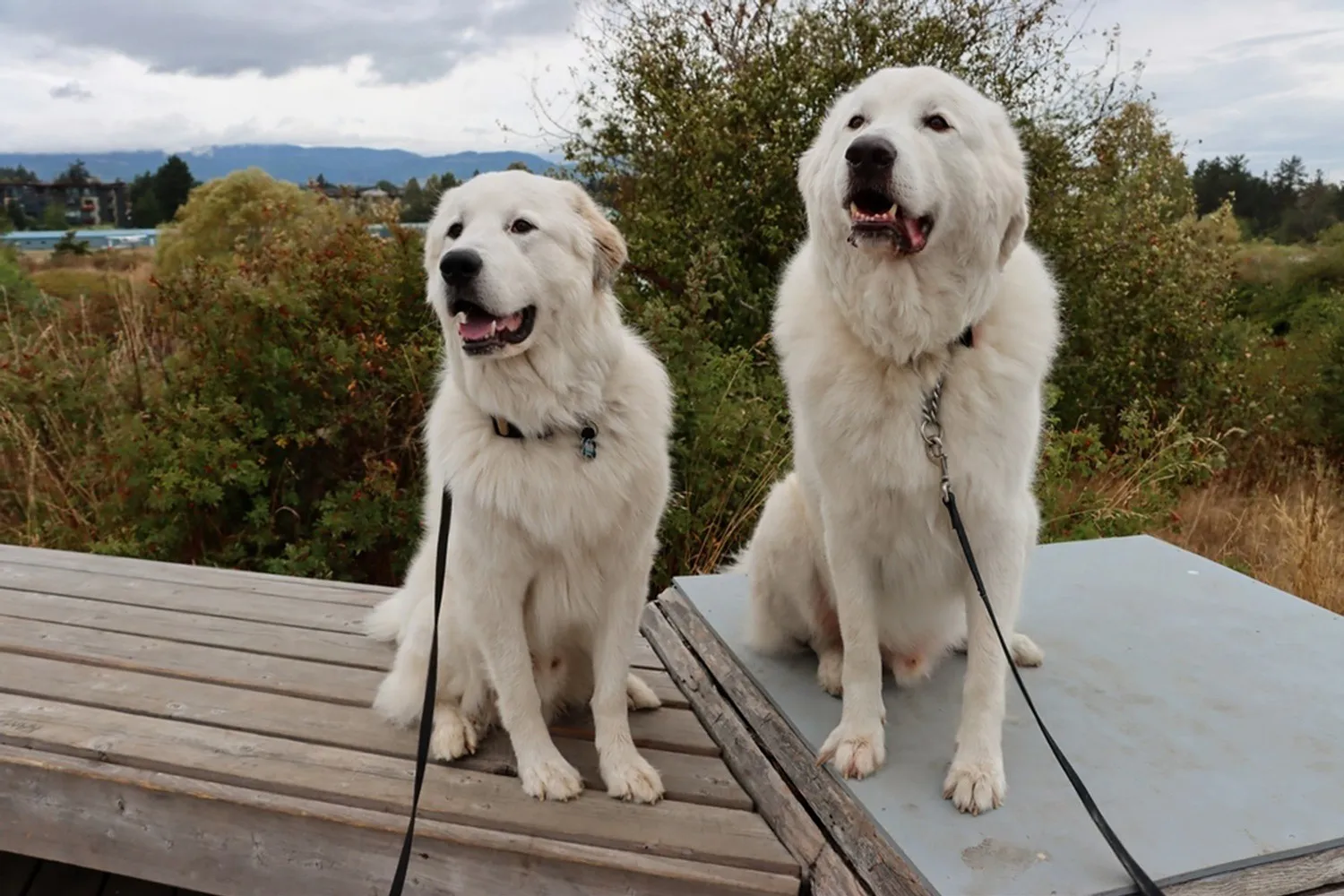
Who Is a Great Pyrenees Best For?
Picture a big, snow white fluff lounging happily in a snowbank that’s the Great Pyrenees in their element. They’re built for the countryside and crisp weather; that thick double coat shrugging off cold like it’s nothing. I once house sat on a small mountain homestead, and the resident Pyr would do a slow, serious patrol at dusk, then settle where he could watch the pasture. He wasn’t dramatic about it just quietly reliable, like a night shift security guard in a fur coat.
If you’ve got land, livestock, or even a few backyard hens, this breed’s old instincts shine. They were bred to guard, and they still take that job to heart. A friend of mine in Vermont swears her Pyr can spot a hawk before she does, and he’ll put himself between the birds and the coop without being asked. Farmers, homesteaders, and rural folks who need a calm, steady presence will love them.
They’re also famously gentle with kids true “soft giants.” My neighbor’s Pyr used to shadow her toddler around the yard with the patience of a kindly babysitter. That said, supervision and good manners on both sides are a must. Teach kids to be respectful, and teach the dog how to greet visitors so that protective instinct stays polite. Early socialization and a solid fence go a long way.
For suburban families, a Great Pyrenees can still be a great fit if you’ve got space, tolerant neighbors, and an appreciation for a dog who may bark at odd hours because, in their mind, they’re working. Expect lots of white fluff on your clothes, steady but not intense exercise needs, and an independent thinker who responds best to calm, consistent training. They’re happiest in cooler climates and aren’t the best off leash companions, but if you want a loving guardian who will adore your family and keep a quiet watch over your world, a Great Pyrenees is hard to beat.
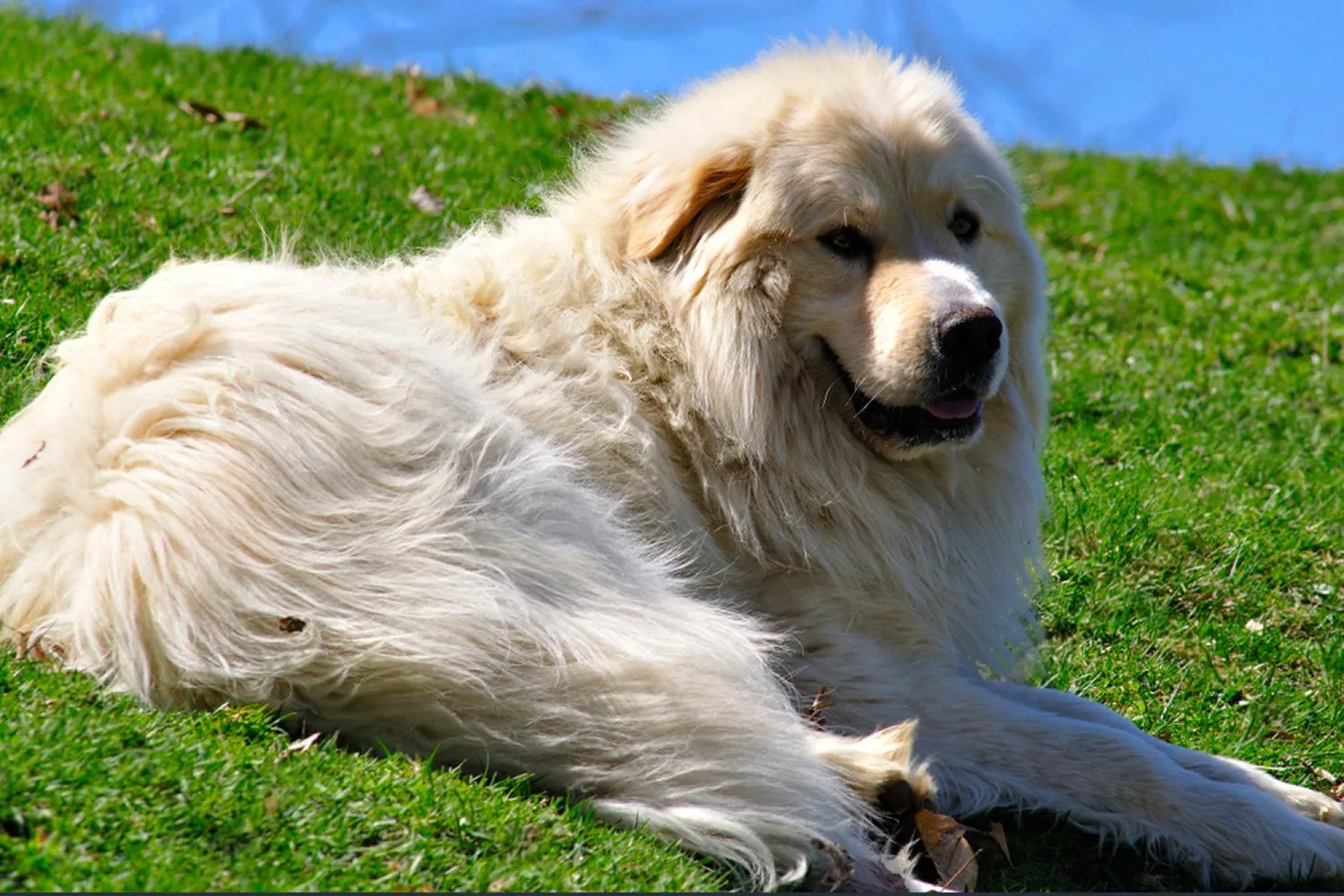
Great Pyrenees Grooming and Shedding
That big, fluffy white coat is as glorious as it looks and yes, it sheds. Regular brushing is your best friend here. I aim for at least once a week, and during heavy shedding spells it bumps up to a few quick sessions. The good news is their coat is naturally resistant to tangles and even dirt. More than once I’ve watched a muddy Pyrenees dry off and, like magic, the dirt just dusted away. Still, if you wear a lot of black, keep a lint roller handy. I learned that lesson the day my Great Pyrenees decided my favorite pants were a perfect nap spot.
Grooming doesn’t need to be a production. A solid 30-minute brush usually keeps the fluff under control and prevents those constant tumbleweeds around the house. I like a slicker brush for the outer coat and an undercoat rake during seasonal “blowouts” in spring and fall. Focus on high shed areas like the pants, chest, and behind the ears. Keep baths occasional just when they truly need it so their coat can do its self cleaning thing. And don’t forget the nails. They grow faster than you think; a trim every few weeks helps keep your Pyrenees comfortable, especially if they’re not wearing them down on rough surfaces. I keep treats nearby and take it slow, checking any dewclaws too. A calm, routine session turns grooming from a chore into a cozy bonding moment and your floors will thank you.
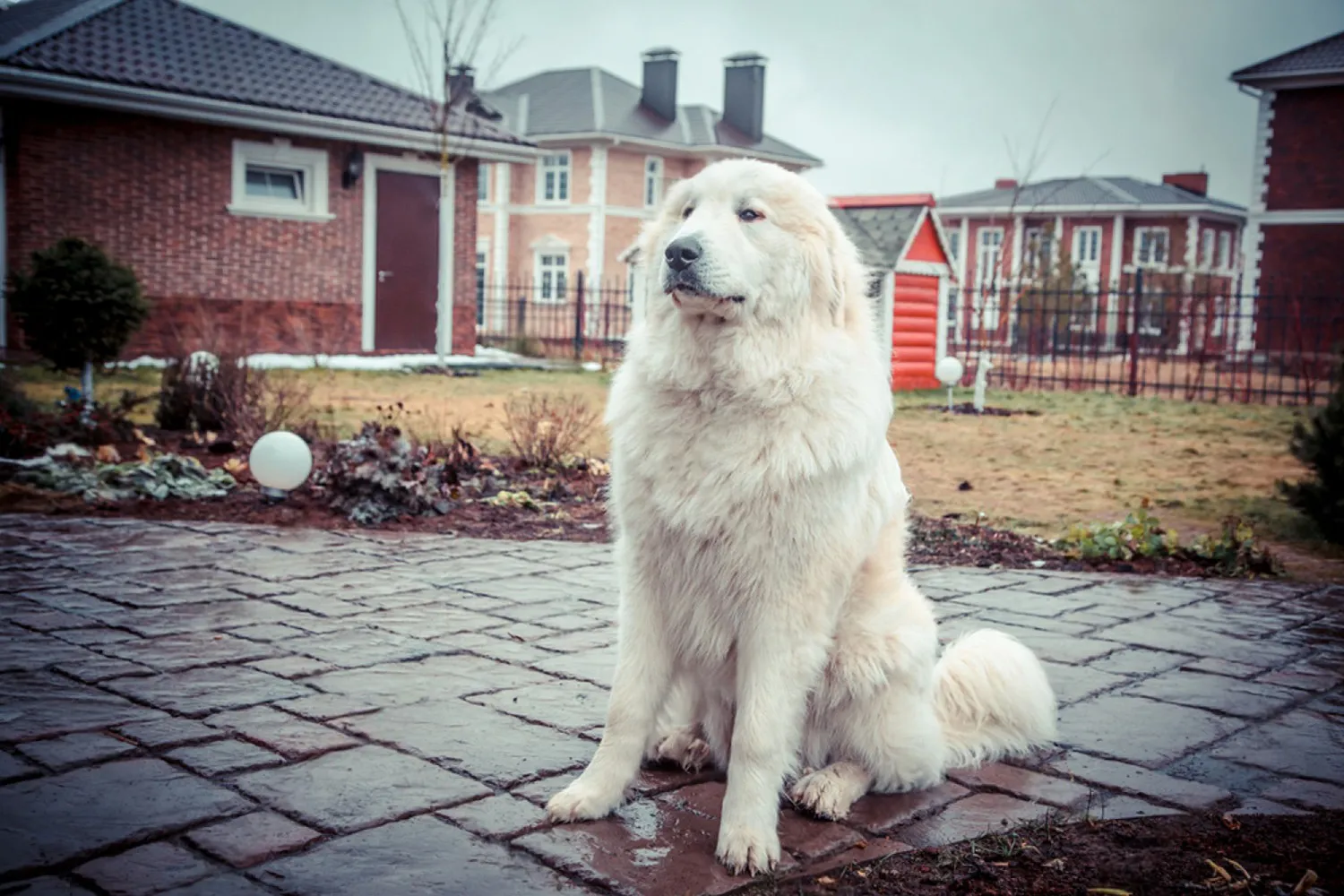
Do Great Pyrenees Bark a Lot?
These gentle giants were bred to keep watch over flocks, so sounding the alarm is part of who they are. A Great Pyrenees won’t usually bark for no reason they bark to announce anything unusual: a passing car, a rustle in the yard, a suspicious squirrel with shifty eyes. That makes them wonderful companions in rural settings where their big, confident voice is an asset. In close quarters like apartments or townhomes, though, their booming “all clear” can wear thin with neighbors.
You can absolutely shape the habit while they’re young. I like to teach a “thank you” or “quiet” cue the moment a pup alerts, then reward the silence. It’s also smart to manage triggers: close curtains at night, use white noise, bring them indoors during busy hours, and give them a job (chews, puzzle feeders, evening sniff walks) so they’re not patrolling out of boredom. My friend’s Pyr, Bear, used to announce every deer that tiptoed past the fence once we paired that first bark with “thank you” and a treat, he learned to settle after a single alert.
Even with training, expect some barking it’s baked into the breed. If you love the idea of a devoted night watchman and you’ve got space (and tolerant neighbors), a Pyr can be perfection. If you need near silence, you might want to think twice or commit to early, consistent training with a good positive reinforcement trainer.
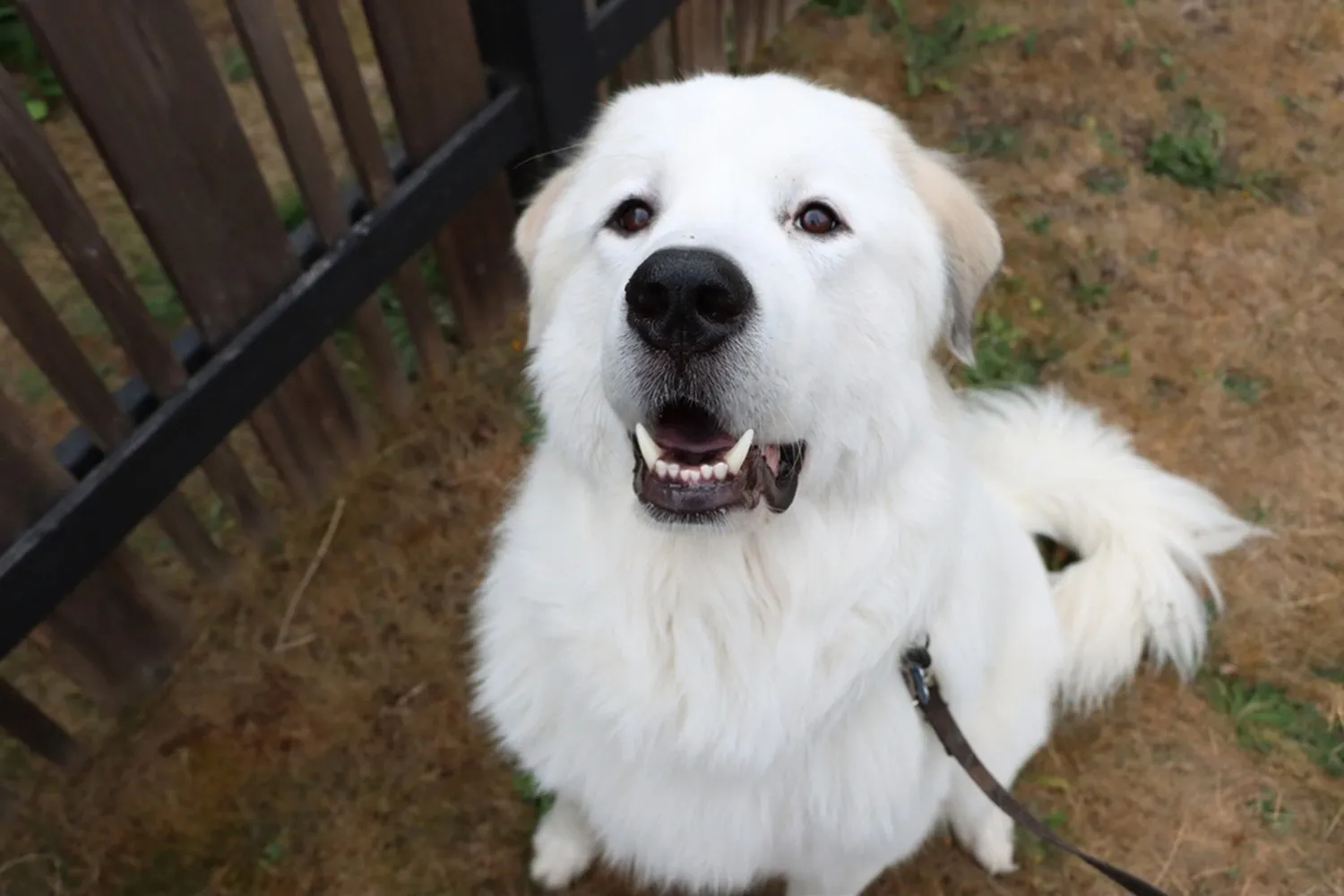
Average Weight and Height of a Great Pyrenees
Great Pyrenees are truly gentle giants. Most adults weigh between 40 and 70 kilograms (about 88 to 154 pounds), with males typically landing toward the higher end and females a bit lighter. In height, a full grown Pyr usually stands around 63 to 81 cm at the shoulder (roughly 25 to 32 inches). Good nutrition during puppyhood helps them reach their full potential my neighbor’s Pyr, Luna, stretched to a majestic 78 cm by her second birthday, and you could practically rest a cup of tea on her back if she’d let you.
Because they’re such a large breed, Pyrs often have a calmer vibe than your average small dog. That said, they still need regular exercise to keep muscles strong and joints happy. Think daily brisk walks, a few short play sessions, and some brain games like scent work or simple training drills. I like two solid walks a day and a little yard “patrol” time; it keeps my big floofs content and pleasantly snoozy by evening. For growing puppies, keep activity steady but low impact no marathon stair sprints or endless fetch on hard ground so those developing bones stay safe.
A quick tip on weight: aim for a healthy body condition rather than chasing a number. You should feel ribs with light pressure and see a gentle waist from above. And invest in a sturdy harness and leash when a 60-kilo guardian decides a squirrel needs supervising, you’ll be glad you did.
https://en.wikipedia.org/wiki/Pyrenean_Mountain_Dog
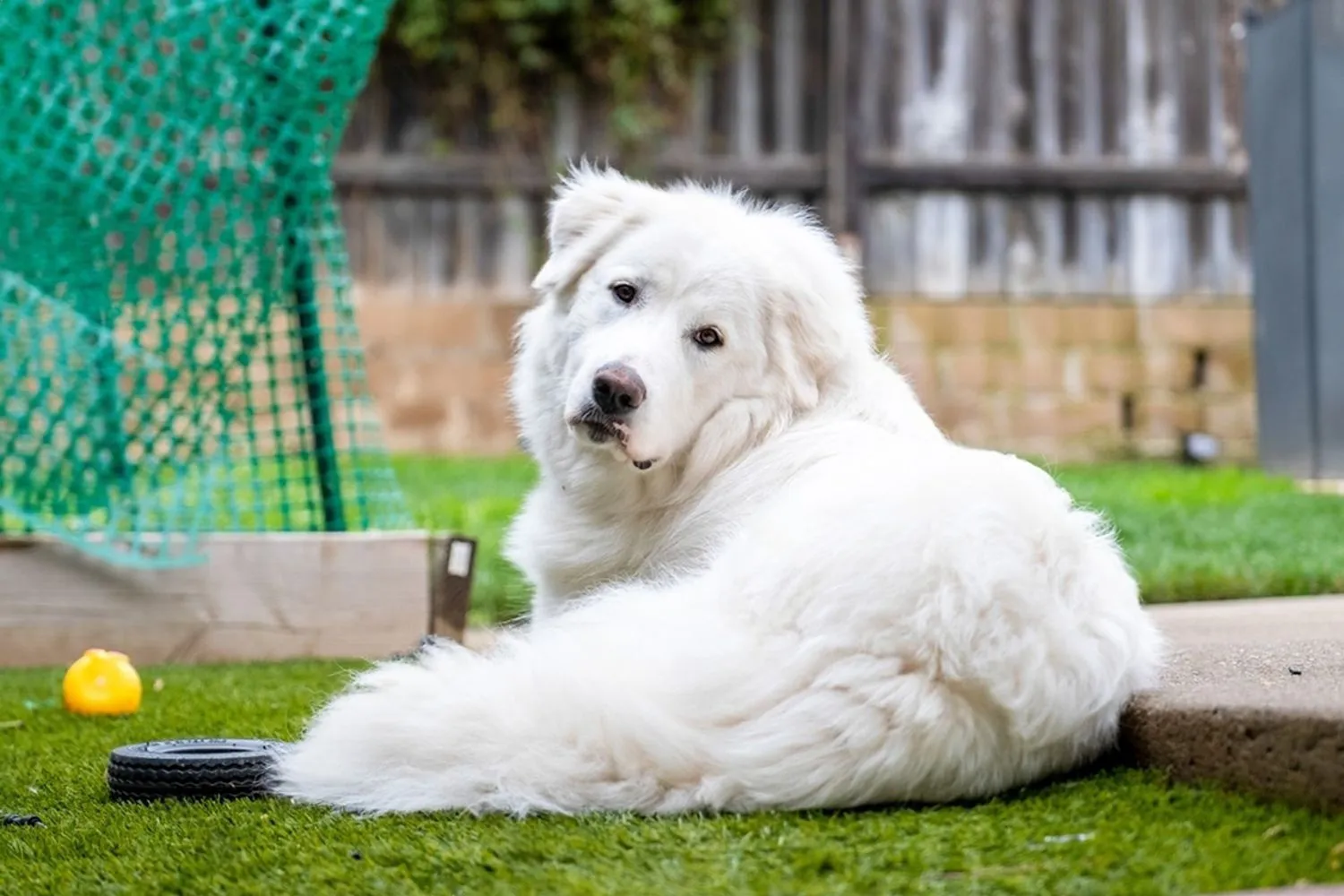
Are Great Pyrenees Easy to Train?
With Great Pyrenees, the earlier you start, the better your future self will thank you. These gentle giants are bred to be protective and a bit independent, so they don’t automatically accept every stranger as a friend. Early socialization is your secret weapon: invite calm, kind visitors over, pair new people with treats and praise, and take your pup to safe, varied places to hear different sounds and see different faces. Keep training sessions short and upbeat five to ten minutes is perfect. I used to keep a treat pouch by the door so when the delivery driver appeared, my Pyr got a steady stream of “good stuff” for staying quiet and watching me.
As they get older, those strong guardian instincts and independent streak can make new lessons slower to sink in. That’s why adopting and training while they’re still a puppy is such a good idea. You’re laying foundations loose leash walking, a solid “come,” a friendly “go to your mat” when guests arrive that you’ll be very grateful for when your fluffy cloud grows into a 90-pound decision maker. If you do bring home an older Pyr, it’s not impossible, just expect to lean hard on consistency, patience, and high value rewards.
Toilet training and daily routines usually click quickly. Pyrs are great communicators: they’ll sit by the door, pace and sniff, paw the bell (yes, doorbell training works wonders), or give you the classic leash stare when it’s time. Mine used to nudge the leash off its hook and park by the door like a furry doorman. Set a predictable schedule, reward outside potty breaks immediately, and wait for a calm sit before meals so you don’t accidentally reinforce demanding barks. One last tip: teach a cheerful “quiet” and a “watch me” early when your Pyr chooses you over a suspicious squirrel or a surprising visitor, that’s training gold.
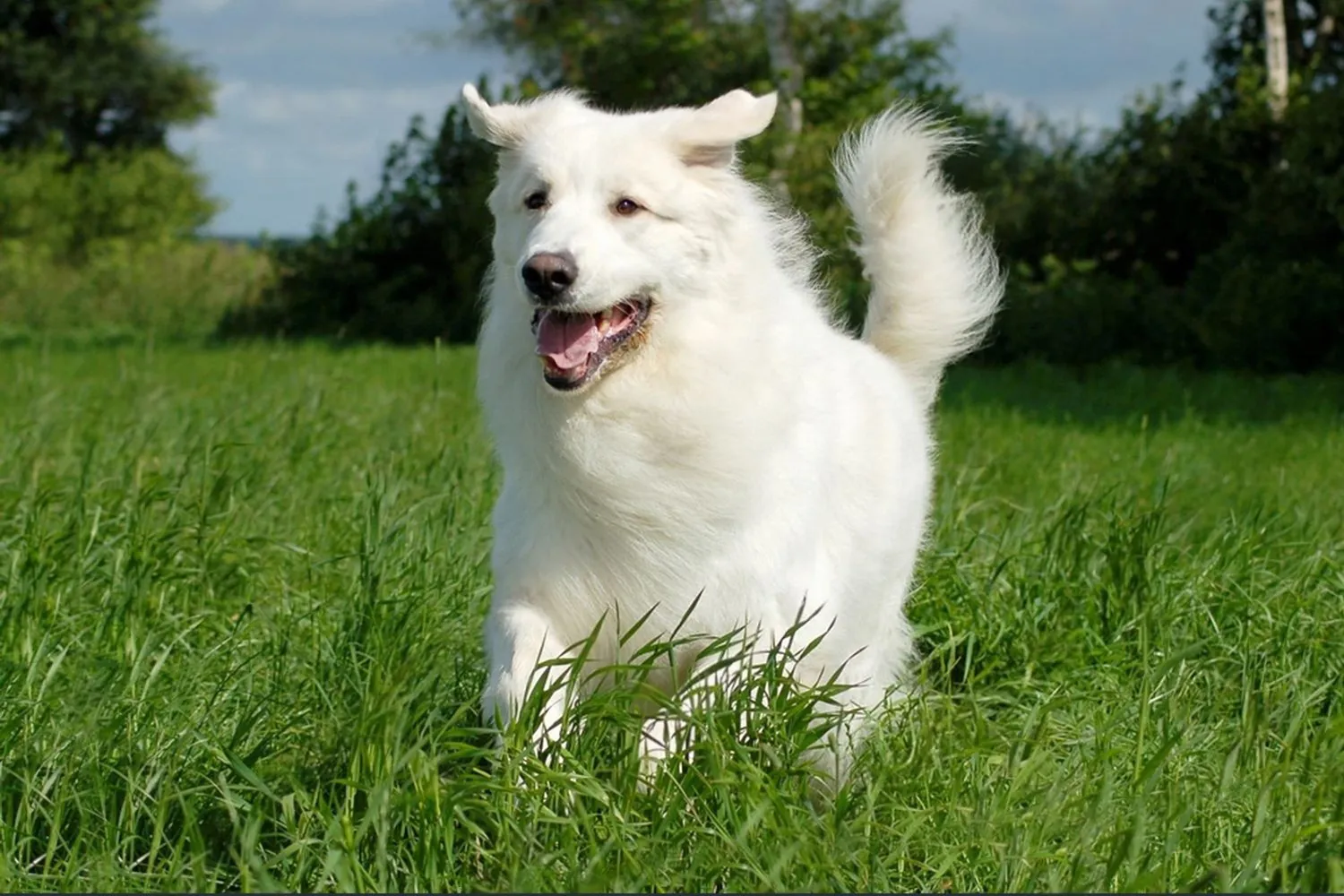
How Do Great Pyrenees Behave? A Look at Their Temperament and Personality
Great Pyrenees were bred to watch over flocks in the mountains, and you can still see that gentle guardian spirit in them today. Around their own people, they’re soft as marshmallows affectionate, calm, and quietly devoted. Around strangers, though, they tend to pause and assess. It’s not rudeness; it’s their built in security system running a quick check to make sure everything’s safe. I met a Pyr at a farmers market once who stood between me and his owner like a fluffy white wall for a full minute. When he decided I was okay, he leaned his whole weight into my legs and sighed like we’d been friends forever.
If you want a sociable Pyr, start early. Introduce your puppy to all kinds of people kids with scooters, folks in hats, delivery drivers with big bags, the neighbor with the booming laugh. Keep interactions calm and positive, and let your pup approach in their own time. My favorite trick is to have new people toss a treat to the side, so the puppy can sniff without feeling cornered. Do that consistently and you’ll see this breed’s friendly side bloom.
Let’s talk about barking. Pyrs are enthusiastic barkers alerting is their love language. They’re not trying to be noisy; they’re doing their job. Early training helps: I teach a “thank you” or “enough” cue, reward the quiet, and give them a “job,” like going to a mat by the window when something interesting appears. A breeder I spoke with in California swears by a late evening walk and gentle play session to take the edge off the nighttime patrol instincts.
Energy wise, think slow and steady, not zoomies every hour. They’re content to conserve energy most of the day, then amble along on a long, easy walk. Mine loved a mellow hike where he could set the pace, nose in the breeze, occasionally pausing to “survey his kingdom.” That said, they still enjoy fun and games puzzle toys, light fetch in the yard, scent work, even beginner level dog sports that don’t require sprinting or tight turns. Keep sessions short and upbeat; Pyrs are independent thinkers and appreciate a reason to participate.
A few more temperament tips:
– They’re polite but protective. Clear routines and a securely fenced yard help them relax.
– They respond best to patient, positive training. Think “coach,” not “drill sergeant.”
– They’re tender with family and usually good with other pets when introduced thoughtfully.
Give a Great Pyrenees a safe home, kind guidance, and a few sturdy toys, and you’ll have the most loyal, cloud like companion who watches over your world with a calm, steady heart.
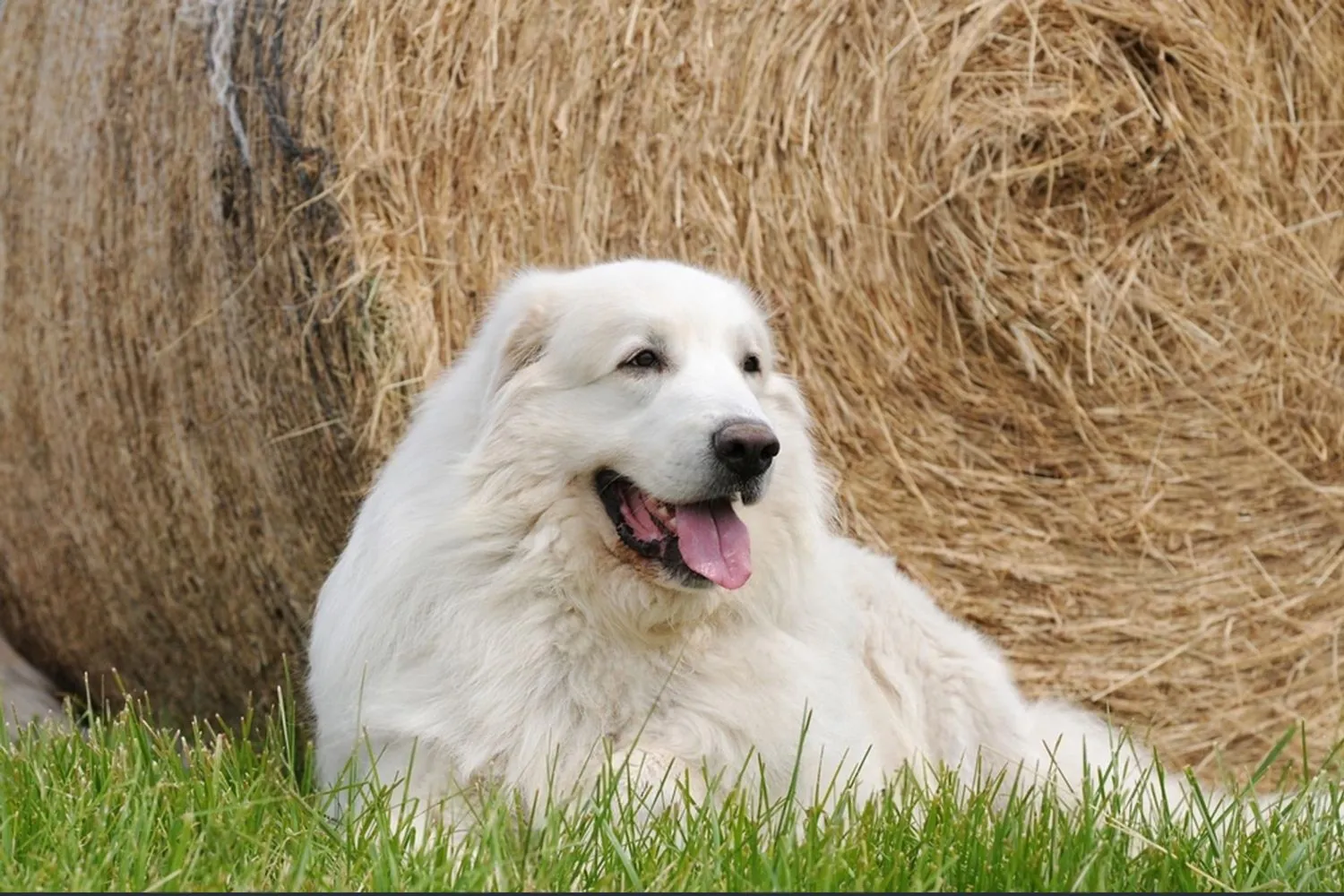
Do Great Pyrenees Have Common Health Issues?
Great Pyrenees are gentle giants with hearts of gold, but like most big breeds, they can be prone to a few health hiccups especially in their hips and legs as they age. Keeping them active is one of the best gifts you can give. Regular movement builds strong muscles to support those big frames, and it keeps their joints happier for longer.
Daily walks are non negotiable in my house, and I like to mix in low impact “dog sports” to keep things fun. Swimming is fantastic for building muscle without pounding the joints. I’ve also had great luck with leisurely hikes, nose work games in the backyard, and even a little basic cart pulling once my dog was fully grown. One summer, I took my Pyrenees to a quiet lake twice a week she’d paddle around like a furry canoe and sleep like a rock afterward. Just keep in mind that puppies shouldn’t be jumping off high obstacles or running long distances; let those growth plates close first, then slowly build intensity.
Hip and elbow dysplasia are the big ones to watch for in large breeds. These genetic conditions can lead to pain and mobility issues as they get older. Keeping your Pyrenees lean is crucial extra pounds add stress to the joints. I keep a hand on the ribs during grooming; if I can’t feel them without pressing, it’s time to cut back the snacks. Watch for subtle signs like a “bunny hop” run, stiffness after naps, or reluctance to climb stairs. Good footing at home helps too throw down a few rugs on slippery floors to prevent slips.
Luxating patellas can pop up too this is when the kneecap slips out of place. Sometimes you’ll see a brief skip or hop, then they’re fine again. If you notice that little hitch in their step, have your vet take a look. Strengthening exercises like controlled sit to stand reps, short hill walks, and steady, straight line leash walks can help build supportive muscles. Keep nails trimmed so their gait stays natural.
Gastric dilatation, commonly called bloat, is a serious concern for deep chested breeds like the Pyrenees. It can become life threatening quickly if the stomach twists. Learn the warning signs: a swollen belly, unproductive retching, drooling, restlessness, and sudden discomfort. I keep my routine simple to lower the risk several smaller meals instead of one big one, a slow feeder bowl for my gulper, and quiet time before and after meals. A friend’s Pyrenees had a bloat scare late one night, and the only reason it ended well was because they recognized the signs and got to the emergency vet immediately. It’s worth having that number saved in your phone.
Their eyes deserve special attention too. With age, some Pyrenees can develop eye conditions, including things like persistent pupillary membranes that may affect vision. If you’re working with a breeder, ask for eye health certificates from organizations such as the Canine Eye Registry Foundation to check the parents for inherited issues. At home, watch for cloudiness, heavy tearing, redness, or squinting. I also keep the hair around the eyes tidy and gently wipe away debris after a romp in the wind.
A few simple habits go a long way: steady exercise, daily walks, smart weight management, and regular checkups. If something looks “off,” trust your gut and call the vet catching issues early is a game changer. With good breeder screening, a fun activity routine, and a little day to day care, you can help your cuddly Pyrenees stay comfortable, strong, and ready for those big, velvety snuggles.
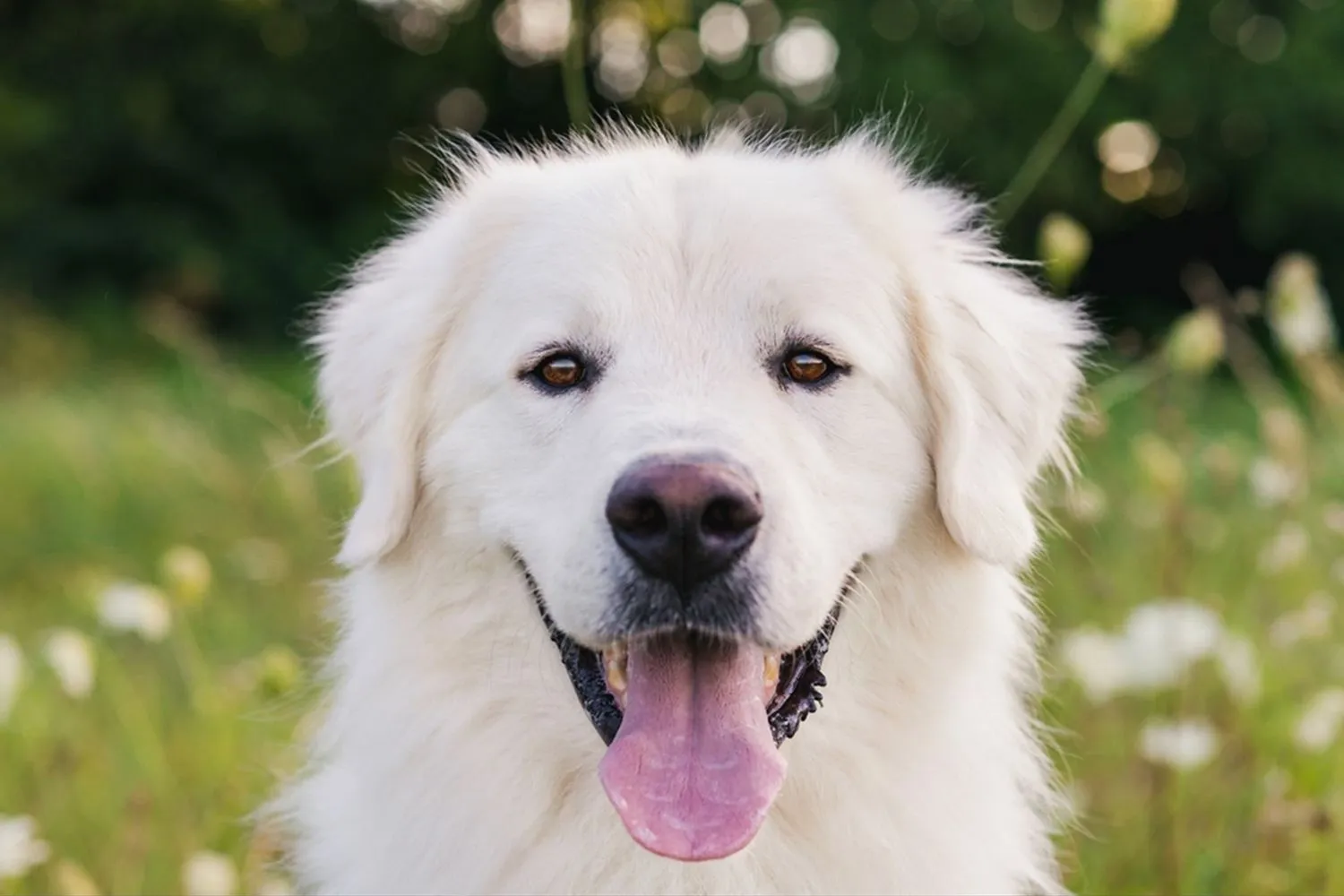
What Is the Lifespan of a Great Pyrenees?
Most Great Pyrenees live around 10 to 12 years, which is pretty typical for a big, mountain bred guardian. Some make it a bit longer I used to meet an old gentleman Pyr named Bear on our morning walks who proudly reached 13 and still insisted on doing a slow patrol of the park. With good genetics and steady care, you can often squeeze a little extra time out of those golden years.
If you’re hoping to help your Pyr age gracefully, focus on the basics. Keep them lean and strong extra weight is hard on those big joints. Gentle daily exercise is perfect: think long, unhurried walks, not sprint sessions. I swear by slow feeder bowls and smaller, more frequent meals to keep tummies happy, and I avoid rough play right after eating. Regular vet checkups (twice a year once they’re seniors) catch little issues before they become big ones. A comfy orthopedic bed, rugs for traction on slippery floors, and a ramp for the car made a world of difference for my friend’s Pyr, Daisy, who made it to 12½ and still loved her evening strolls. Don’t forget the coat care, either consistent brushing keeps their skin healthy and helps them stay comfortable, especially in warmer weather.
In the end, the years go by faster than you expect, but they’re packed with loyalty and those gentle, watchful eyes. Make the days good ones, and you’ll feel every bit of that big hearted companionship.
How Much Should a Great Pyrenees Eat?
For most adult Great Pyrenees, 4-6 cups of quality dog food per day is a solid starting point, split into at least two meals. Morning and evening works well at my house my big fluffball is happiest when breakfast shows up with the sunrise and dinner arrives right on schedule. Keeping mealtimes consistent helps their digestion and makes it easier to notice changes in appetite.
Great Pyrenees aren’t usually picky eaters, and many enjoy a mix of dry and wet food. I like to use mostly kibble for crunch, then add a spoonful or two of wet food or warm water to make it more tempting and hydrating. If your dog wolfs food down, a slow feeder bowl can turn mealtime into a calmer, safer routine.
That 4-6 cup range is just a guide your dog’s ideal amount depends on age, size, activity level, metabolism, and even the season. My friend’s farm guardian burns through more calories patrolling the pasture than my couch loving snow bear does on neighborhood strolls. Keep an eye on body condition: you should feel ribs with a light layer of padding and see a gentle waist from above. If the ribs are vanishing under fluff and fat, trim back by half a cup; if they’re too sharp, bump up a bit. Also check the calories on your food bag kibbles can vary a lot in calories per cup, so 4 cups of one brand can equal 6 of another.
As Pyrenees age, some lose enthusiasm for eating, but it’s still important to offer at least two meals daily. Routine matters. To entice a senior appetite, I’ve had luck warming the food slightly, adding a splash of low sodium broth, or mixing in a spoon of wet food. Keep portions sensible and adjust slowly changes of a quarter to half a cup at a time are easier on their stomach.
A few extra tips I’ve learned the hard way: count treats as part of the daily total (it’s amazing how quickly training snacks add up), measure with an actual scoop instead of eyeballing, and make adjustments based on what you see over a week rather than day to day. And if you’re feeding a very young puppy or a hard working guardian, their schedule and amounts may differ your vet can help tailor a plan. In the end, your Great Pyrenees will tell you what’s working through their energy, coat, and body condition; our job is just to listen and fine tune.
Great Pyrenees FAQs
Are Great Pyrenees good hiking dogs?
Absolutely. These gentle giants were once the go to companions in the rugged Pyrenees mountains, and that mountain heritage still shows. Their thick coat keeps them warm in cold weather, and their calm, watchful nature can make you feel extra secure on the trail. That said, they’re steady hikers, not sprinters think scenic treks rather than race day pace. Start with shorter trails, keep them leashed (their guardian instincts can kick in when wildlife rustles), and carry plenty of water since they can overheat in warmer temps under all that fluff. I always check paws and those famous double dew claws after rocky hikes, and I’ve learned to pack a small towel snow and burrs love a Pyr’s coat.
Are Great Pyrenees hypoallergenic dogs?
No, Great Pyrenees are not considered hypoallergenic. They shed a lot of hair and dander thanks to that glorious double coat. If you’re allergy prone but smitten with the breed, a solid grooming routine helps: regular brushing (daily during heavy shed), a good vacuum with a HEPA filter, and keeping bedrooms or one “fur free” zone off limits. I also keep a lint roller by the door white Pyr hair has a way of attending every meeting with you. It’s smart to spend time with a Pyr before committing, just to see how your allergies handle it.
Why do so many people get rid of Great Pyrenees?
The most common reason is that they can be challenging to train when they’re young. They’re wonderfully independent thinkers excellent for guarding, but it can frustrate first time owners who expect instant obedience. They may also bark to announce anything unusual and need secure fencing because many have a “patrol the perimeter” mindset. The good news: with patient, positive training and early socialization, a well raised Pyr is among the friendliest and most protective large breeds you’ll meet. Consistency is everything. My Pyr pup once sat down in the middle of a sidewalk protest and refused to budge cheese, patience, and a sense of humor saved the day. Give them a job (even a nightly “yard check” with you), reinforce calm behavior, and keep sessions short and rewarding.
Do Great Pyrenees dogs like to swim?
They usually prefer wading and splashing to full on swimming. That heavy, shaggy coat gets waterlogged, and most Pyrs don’t have the same water stamina as breeds like Irish Setters or Golden Retrievers. Still, many enjoy a cool paddle on a hot day. Choose calm, shallow water, consider a doggy life jacket if you’ll be near deeper areas, and rinse and dry thoroughly afterward to prevent skin issues. I keep a big towel in the car mine loves creek belly soaks but shoots me a betrayed look if the water creeps past her chest.
Disclaimer:
This article is for informational purposes only and doesn’t replace professional veterinary or training advice. Always consult a certified vet or dog trainer for guidance specific to your pup.
